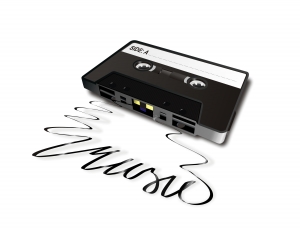 The abbreviation sounds like a reference to a Central African country and although DRM has to do with management, it’s about managing something less tangible and with less defined borders.
The abbreviation sounds like a reference to a Central African country and although DRM has to do with management, it’s about managing something less tangible and with less defined borders.
With the increasing amount of digital content flooding our world, whether it’s music, e-books or video it has become necessary for companies to protect their property by setting certain measures in place. But what is DRM?
We’ve found the following definition and description on one of our favorite websites –
“Digital Rights Management (DRM) is a type of access control technique used by copyright holders, publishers, and hardware manufacturers to limit the use, manipulation, and distribution of digital content after the initial sale of that content.
Examples of DRM include the encryption of digital video (on DVD and Blu-ray discs) to prevent the purchaser from ripping the content off the disc, locking ebooks to the account with which they were purchased (thus you can read your Amazon-supplied ebook on your Kindle, transfer it to your Kindle app on your iPad, or read in on Amazon.com, but you cannot give that book to a friend or transfer it to your Barnes and Noble Nook), and the restriction of downloaded gaming content to the console or computer with which it was downloaded (you cannot simply copy your Xbox Live Arcade games from your console to the consoles of all your friends).
While publishing and content companies maintain that DRM is necessary to protect their intellectual property and fight piracy, many annoyed consumers note that content locked down by DRM is still widely distributed by pirates yet paying customers are stuck with the frustration of dealing with DRM systems including locked hardware, content they cannot transfer between other devices, and other such inconveniences.”
Today is also World Intellectual Property Day with various activities presented by Stellenbosch University. More info.
(SOURCE: www.howtogeek.com)
 Die afkorting klink soos `n verwysing na `n sentrale Afrikaland en alhoewel DRM ook versigtige bestuur behels, is dit minder tasbaar en strek dit wel oor grense heen.
Die afkorting klink soos `n verwysing na `n sentrale Afrikaland en alhoewel DRM ook versigtige bestuur behels, is dit minder tasbaar en strek dit wel oor grense heen.
As gevolg van die drastiese toename in digitale inhoud in ons lewens, of dit musiek, video of e-boeke is, het dit noodsaaklik geword vir maatskappye om hul eiendom te beskerm deur sekere maatreёls in plek te sit. Maar wat is DRM?
Ons het die volgende definisie en verduideliking op een van ons gunsteling webwerwe opgespoor –
Digital Rights Management (DRM) is `n tipe toegangsbeheer tegniek gebruik deur kopiereg-eienaars, uitgewers en hardwarevervaardigers om die gebruik, manipulasie en verspreiding van digitale inhoud na die verkoop daarvan te beperk.
Voorbeelde van DRM sluit die inkripsie van digitale video (op DVD en Blu-ray skywe) om te voorkom dat die koper nie die inhoud ontsluit nie of die beperking van e-boeke tot die rekening van die oorspronklike koper (jy kan byvoorbeeld you Amazon e-boek op jou Kindle lees of op Amazon.com, maar jy kan nie die boek vir iemand anders aanstuur of gee nie). Dit sluit ook die beperking op die aflaai van speletjies na slegs die rekenaar waarvan die afgelaai is – dus kan jy dit nie kopieer en uitdeel vir vriende nie.
Onder sekere geledere is daar `n sterk weerstand teen DRM en bly dit `n kontroversiёle onderwerp. Maatskappye voel dis nodig om hul intellektuele eiendom te bekerm en rowery te beveg, maar gebruikers se grootste frustrasie is dat DRM hardeware as’t ware sluit en data nie tussen verskeie toestelle geskuif kan word nie.
Vandag is ook Wereld Intellektuele Eiendom dag en Stellenbosch Universiteit het verskeie aktiwiteite om bewustheid te kweek georganiseer. Meer inligting.
(BRON: www.howtogeek.com)
Tags: Research

